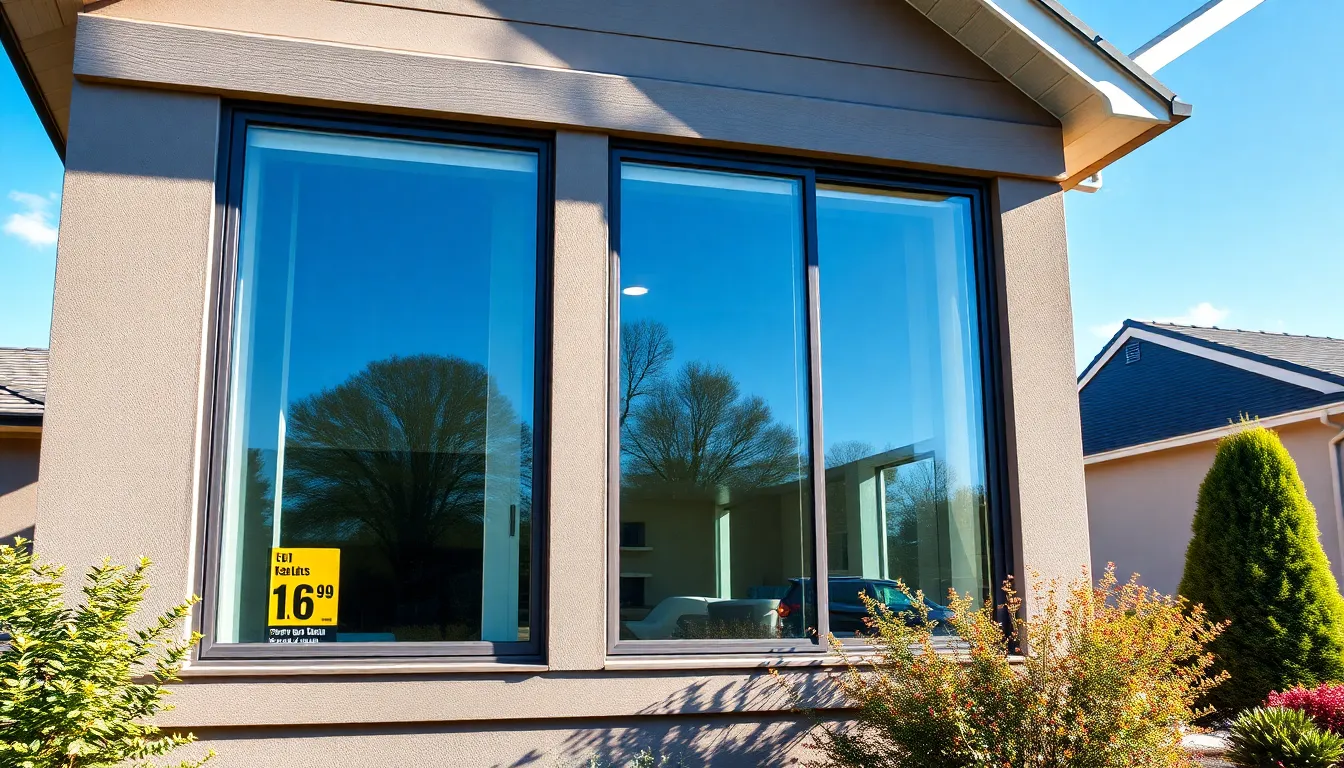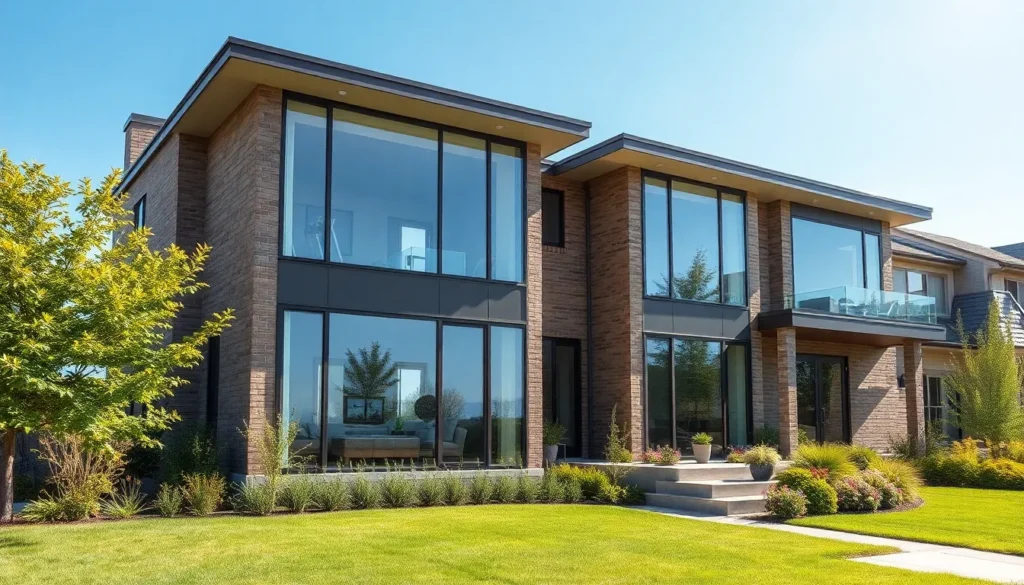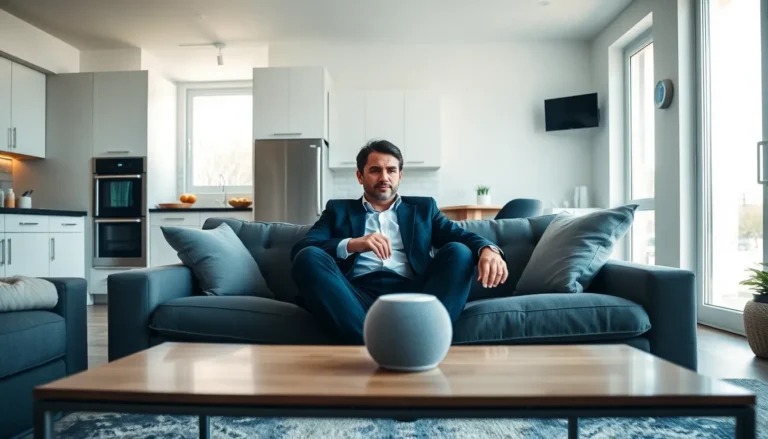In an era where sustainability is more crucial than ever, energy-efficient windows have emerged as a game-changer for homeowners and businesses alike. These innovative windows not only enhance a building’s aesthetic appeal but also play a vital role in reducing energy consumption and lowering utility bills. As temperatures rise and fall, the right windows can significantly impact indoor comfort and environmental footprint.
Investing in energy-efficient windows means embracing technology that maximizes insulation and minimizes heat loss. With advancements in materials and design, these windows offer a perfect blend of functionality and style. Whether it’s for a new build or a renovation project, understanding the benefits of energy-efficient windows can lead to smarter choices that benefit both the wallet and the planet.
Table of Contents
ToggleOverview of Energy-Efficient Windows
Energy-efficient windows play a crucial role in increasing sustainability for residential and commercial spaces. These windows offer advanced insulation and design that help minimize energy loss while enhancing a building’s aesthetic appeal.
Definition and Importance
Energy-efficient windows are designed to reduce energy consumption by minimizing heat transfer. They typically include features such as double or triple glazing, Low-E coatings, and gas fills like argon or krypton. The importance of these windows lies in their ability to improve indoor comfort, lower energy bills, and diminish environmental impact by reducing reliance on heating and cooling systems.
Benefits of Energy-Efficient Windows
- Reduced Energy Costs: Energy-efficient windows lower heating and cooling expenses by maintaining consistent indoor temperatures.
- Improved Comfort: These windows prevent drafts and heat loss, enhancing overall comfort in living or workspaces.
- Noise Reduction: Multi-pane designs minimize outside noise, creating quieter environments.
- Increased Home Value: Properties with energy-efficient upgrades often see higher market values and faster sales.
- Environmental Impact: Utilizing energy-efficient windows contributes to lower greenhouse gas emissions by reducing energy consumption.
Incorporating energy-efficient windows represents both a financial investment and a commitment to environmental sustainability.
Types of Energy-Efficient Windows

Energy-efficient windows come in various types, each offering unique features that enhance performance and comfort. They utilize advanced technologies to improve insulation, reduce heat transfer, and lower energy consumption.
Double and Triple Glazing
Double glazing consists of two panes of glass separated by a sealed space, enhancing insulation by minimizing heat transfer. This design effectively reduces heat loss in winter and keeps interiors cooler in summer. Triple glazing adds a third pane of glass, further increasing thermal performance. Both options significantly decrease drafts and enhance energy efficiency, providing superior comfort year-round.
Low-E Coatings
Low-E (low emissivity) coatings reflect heat while allowing natural light to enter. These thin, transparent layers applied to glass surfaces minimize heat transfer from both directions. In warmer months, Low-E coatings keep indoor environments cooler by reflecting solar energy back outside. In colder months, they retain heat generated inside, improving energy efficiency. By utilizing Low-E coatings, homeowners can enjoy consistent temperatures while reducing reliance on heating and cooling systems.
How Energy-Efficient Windows Work
Energy-efficient windows function by minimizing heat transfer, creating a comfortable indoor environment while reducing energy costs. Various technologies contribute to their effectiveness, including insulation, air sealing, and solar heat gain control.
Insulation and Air Sealing
Insulation in energy-efficient windows relies on multiple glazing layers, typically two or three. These layers trap air or gas between the panes, significantly reducing heat flow. Common gases used for this purpose include argon and krypton, which offer better insulation than regular air. Air sealing further enhances performance by preventing drafts and limiting heat loss through gaps. Properly sealed windows ensure that conditioned air remains inside, contributing to overall energy efficiency.
Solar Heat Gain Control
Solar heat gain control focuses on managing the amount of solar energy that enters a building. Low-Emissivity (Low-E) coatings play a crucial role by reflecting infrared light while allowing visible light to pass through. This feature keeps interiors warm in winter and cool in summer, improving comfort and reducing reliance on heating or cooling systems. The design of energy-efficient windows also considers orientation and shading, optimizing solar gain based on seasonal changes while protecting against excessive heat during warmer months.
Selecting the Right Energy-Efficient Windows
Selecting energy-efficient windows involves careful consideration of specific features and trusted brands. These choices directly impact comfort, cost savings, and environmental benefits.
Key Features to Consider
- Glazing Type: Double or triple glazing offers superior insulation, reducing heat transfer and enhancing energy efficiency.
- Low-E Coatings: Low-emissivity coatings reflect infrared light while allowing visible light to pass through. This feature helps maintain indoor temperatures, minimizing heating and cooling needs.
- Gas Fills: Using inert gases like argon or krypton between glass panes improves insulation. These gases slow down heat transfer, further increasing energy efficiency.
- Frame Material: Frame materials such as vinyl, fiberglass, and wood influence energy performance. Vinyl frames often provide better insulation, while fiberglass frames are durable and energy-efficient.
- U-Factor and Solar Heat Gain Coefficient (SHGC): The U-factor measures heat transfer; lower values indicate better insulation. The SHGC measures solar energy entering your home; choosing windows with lower SHGC values is advantageous in hot climates.
- Air Leakage Rating: This rating reflects how well a window prevents drafts and heat loss. Look for windows with low air leakage ratings to enhance comfort and energy performance.
Brands and Manufacturers
- Andersen: Known for high-quality windows with customizable options and advanced energy-efficient features.
- Marvin: Offers a range of energy-efficient windows and emphasizes sustainable materials in their products.
- Pella: Provides a variety of energy-efficient styles and is recognized for their innovative technologies, such as advanced Low-E glass.
- Simonton: Specializes in vinyl windows, offering energy-efficient options that cater to diverse design preferences.
- Milgard: Features a broad selection of energy-efficient windows, known for customization and durability.
These brands prioritize quality, innovation, and sustainability, making them reliable choices for homeowners seeking energy-efficient windows.
Energy-Efficient Windows and Home Comfort
Energy-efficient windows play a crucial role in enhancing home comfort by ensuring stable indoor temperatures and reducing external noise. Homeowners benefit from improved quality of life and financial savings through lower energy bills.
Temperature Regulation
Energy-efficient windows contribute significantly to temperature regulation within homes. Features like double or triple glazing trap air or gas between panes, creating an insulating barrier. Low-E coatings reflect heat back into the room during winter while allowing sunlight to penetrate, maintaining warmth. In summer, the same coatings minimize heat gain, keeping interiors cooler. Properly sealed frames prevent drafts, ensuring that conditioned air remains inside.
Noise Reduction
Energy-efficient windows also excel in noise reduction. Multiple glazing layers act as barriers against external sounds, absorbing and deflecting noise. This feature proves essential for homes located in busy urban areas or near high-traffic roads. Additionally, improved air sealing minimizes vibrations, further dampening noise intrusion. Homeowners enjoy a quieter and more peaceful living environment, significantly enhancing comfort.
Investing in energy-efficient windows is a proactive step toward enhancing comfort and sustainability. These windows not only lower energy bills but also contribute to a healthier environment by reducing greenhouse gas emissions. With advancements in technology and design homeowners can enjoy improved insulation and durability while increasing their property’s value.
Choosing the right features and reputable brands ensures that the investment pays off in the long run. As the importance of energy efficiency continues to grow making informed decisions about window options will lead to significant benefits for both individuals and the planet. Embracing energy-efficient windows is a smart choice for anyone looking to create a more sustainable and comfortable living space.



